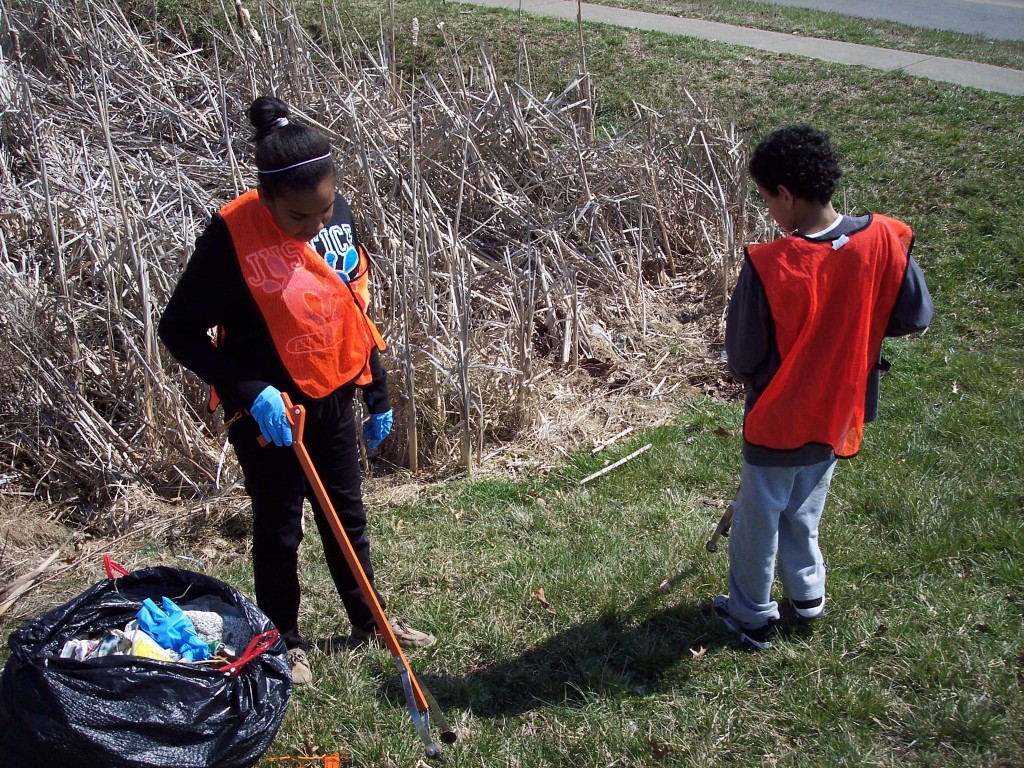Litter

Tips on Handling Litter
Individuals:
- Make sure your trash is secured in the correct receptacle. This means placing cigarette butts in ash trays and ensuring that your garbage and recycling containers are properly closed.
- When you see litter, choose to pick it up and dispose of it.
- Carry a litter bag in your vehicle or on your bicycle.
- Volunteer for neighborhood and community cleanups.
- Report a litter bug.
Businesses:
- Educate your employees on the importance of taking pride in their workplace by maintaining a litter-free environment.
- Provide trash and cigarette receptacles at the entrance to your business.
- Ensure that your dumpsters remain closed.
- Adopt an area around your business to monitor and keep tidy.
Groups:
- Organize your own neighborhood or community cleanup. Contact Bluegrass Greensource for assistance!
- Set up a litter patrol to monitor the problem in your area.
General Safety Tips:
- Wear gloves, such as rubber gloves, leather gloves, or gardening gloves.
- Wear sturdy walking shoes.
- Face oncoming traffic if you’re not on a sidewalk.
- Don’t overfill your trash bags.
- Wear bright colors to make sure that traffic sees you.
- Don’t wear headphones or earbuds so you aren’t distracted from any traffic.
- Don’t pick up sharp or hazardous objects, or containers you can’t identify.
Organize your own litter clean up
Removing litter from streams and roadways is an easy activity for all ages that helps to create a cleaner Kentucky for everyone! Follow these simple steps for planning a successful litter cleanup in your community.

- Select your location. Your chosen area should be accessible from public land. If this is not possible, or if your route will take you through private property, be sure to secure the owner’s permission before going onto their land.
- Recruit volunteers. Take advantage of local newspapers, community newsletters and bulletin boards, and sites such as Facebook and Twitter. In addition, many high school and college courses require students to complete volunteer hours.
- Secure supplies. Your volunteers will need bags and gloves. If your cleanup will be along a roadside, you will also need to have brightly colored vests on hand to make volunteers visible to oncoming traffic. Contact Bluegrass Greensource to provide assistance and materials for your cleanup.
- Coordinate with solid waste. Contact your city or county’s solid waste coordinator and arrange to have a dumpster placed at your cleanup site to allow for easy disposal of gathered material. You should also work with him/her to ensure pickup of the dumpster after your cleanup.
- Host your cleanup. Clearly communicate the route to be cleaned and all expectations to your volunteers. This will make your event run much more smoothly.
- Share your success! Be sure to send pictures from your event to your local paper, community newsletters and Bluegrass Greensource to show your hard work.
Simple steps for coordinating a litter-free event
- Make the commitment. Decide to make your event litter-free and include it in your pre-event planning.
- Provide a sufficient amount of trash cans and recycling containers and make sure they are conveniently placed. The more convenient the bins are, the more likely it is that they will be used.
- Utilize volunteers. Assign volunteers to walk through the event site to pick up any littered items. Volunteers can also help to empty trash or recycling bins as soon as they are full to eliminate the risk of overflow.
- Publicize and communicate before and during your event.
- Notify vendors, exhibitors, staff and volunteers that they are participating in a litter-free event.
- When publicizing your event to potential visitors, make sure to communicate that it will be litter-free.
- Make announcements reminding visitors to throw all trash and recyclables into bins.
- Place signs and banners in key locations to remind visitors to properly dispose of their trash.
- Include information on the litter-free aspect of your event in the program.
- Offer information and materials in multiple languages if necessary.
- Evaluate after the event is over, ask staff, volunteers, vendors and exhibitors to offer suggestions for improvement.